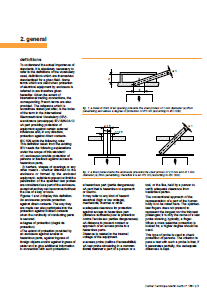Protection requirement
It is not sufficient that a piece of equipment fulfils the functional requirements assigned to it. It also has to be protected against possible adverse external influences, and likewise to ensure that it is not harmful to the user or to the environment.
Different means can be used alone or combined to comply with this last requirement.
All of them derive from one of the following methods:
- placing out of reach vertically or horizontally, for instance by means of an obstacle,
- total solid insulation as used particularly for cables, but which is not easily applicable when moving parts are involved,
- putting into an enclosure, which is the object of this «Cahier Technique».
This last method has the advantage of providing an easy solution to the other requirement, i.e. the protection of equipment against certain influences such as:
- the ingress of foreign bodies which could disturb the mechanical or electrical operation. They comprise not only sand and dust but also small animals and flying or creeping insects,
- water and other liquids which could alter the insulation and generate degradation,
- mechanical impacts which might deform or break brittle parts,
- corrosive gas from the environment,
- radiated electromagnetic fields,
- various radiations including light.
Constituting a supporting structure, the enclosure also allows for the building of assemblies of complementary and coordinated apparatus. Therefore it is the most common method of protection. It is used for electronic or information technology equipment as well as for domestic appliances or for high or low voltage equipment, or for rotating machines. The enclosure may be built into the equipment or manufactured separately and sold empty to an assembly maker.
It can be made of various materials: metal or synthetic, insulating or conductive. In order to facilitate the relationships between manufacturers, users and legislators, standards define terminology, characteristics and means of checking a product, a service or an installation. As far as protection provided by enclosures is concerned, it is the aim of Publication 529 of the IEC and of prEN 50102 of CENELEC. It must be noted at this point that standards define the protections that enclosures can provide, but not the characteristics of the enclosures themselves.
These so-called «horizontal» standards apply only when referred to by the relevant product standard. By extension, degrees of protection by enclosures are also used to characterize protection provided by barriers.
AUTHOR: Schneider Electric expert | Georges Jean PASTEAU
| Title: | Enclosures and degrees of protection |
| Format: | |
| Size: | 0.075MB |
| Pages: | 12 |
| Download: | Right here | Video Courses | Membership | Download Updates |


